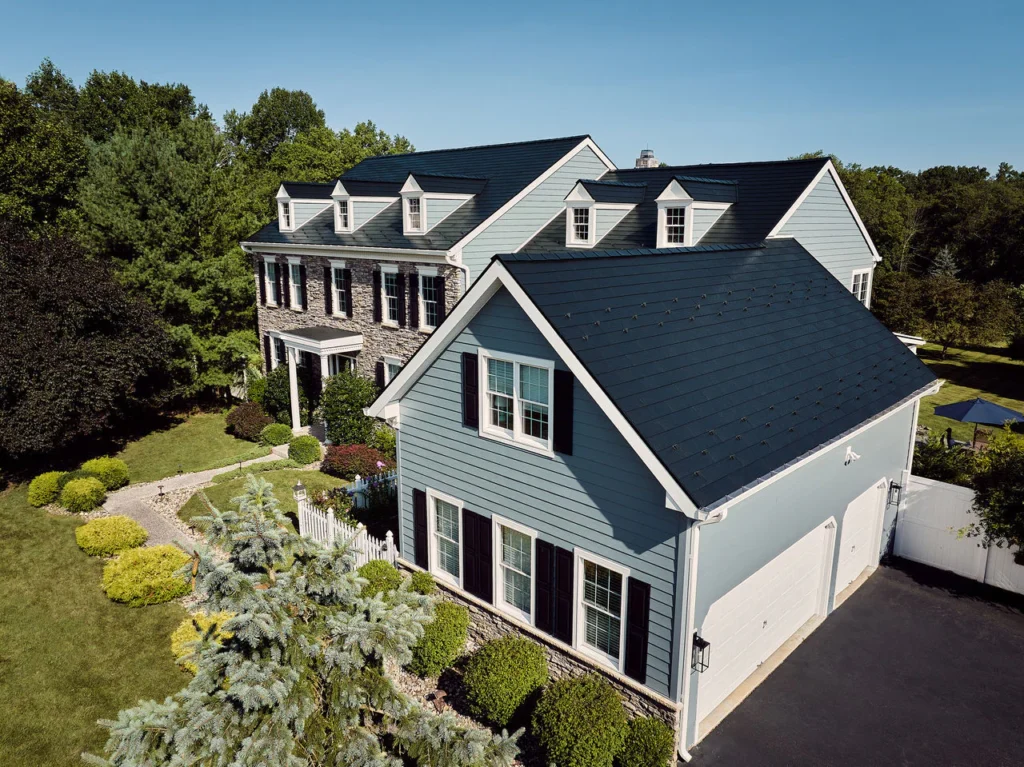Metal roofing has long been associated with barns and industrial buildings, but it has carved a prominent space in modern residential design. Despite its growth in popularity, myths surrounding metal roofing persist—many of which prevent homeowners from considering it as a viable and superior alternative to traditional materials. The truth is, metal roofing has evolved significantly and now offers unmatched longevity, efficiency, and aesthetic versatility.
This article aims to clear the air by examining some of the most common myths about metal roofs and explaining why more homeowners are turning to this option. Whether you’re upgrading an older roof or building a new home, understanding the facts can help you make an informed decision that combines function, style, and long-term value.
Myth #1: Metal Roofs Are Noisy in the Rain
One of the oldest assumptions about metal roofing is that it’s loud during storms. While it’s true that metal roofs can produce sound when rain hits, modern installation techniques largely eliminate this concern.
Reality:
- Most metal roofs are installed over solid decking with insulation and underlayment that act as sound barriers.
- When properly installed, a metal roof is no noisier than asphalt shingles.
- In some cases, the sound can be even quieter due to rigid construction.
Myth #2: Metal Roofing Attracts Lightning
The idea that metal attracts lightning is another misconception. Homeowners often express concern that having a metal roof increases the risk of lightning strikes.
Reality:
- Metal conducts electricity but does not attract it.
- A metal roof, if struck, actually disperses energy more safely than many other materials.
- Metal roofing is non-combustible, offering a safer option in the rare case of a direct lightning strike.
Myth #3: Metal Roofs Will Rust Over Time
The image of a rusty tin roof can deter homeowners from considering metal options. However, this perception is outdated and does not reflect the materials used in modern systems.
Reality:
- Today’s metal roofing materials are coated with advanced finishes such as galvanization and protective paint systems.
- Aluminum, a popular roofing material, is naturally rust-resistant.
- With proper care and quality material, a metal roof can last 40 to 70 years without rusting.
Myth #4: Metal Roofs Are Too Expensive
Metal roofing may have a higher upfront cost, but cost needs to be evaluated over time rather than in the immediate term.
Reality:
- Metal roofing offers one of the best long-term value propositions due to its durability and minimal maintenance.
- Energy savings, insurance discounts, and resale value can offset the initial investment.
- Homeowners usually avoid replacement costs associated with shorter-lived materials like asphalt.
Myth #5: Metal Roofs Make Homes Colder in Winter
Some believe that metal roofs are not suitable for colder climates because they conduct temperature changes rapidly.
Reality:
- A roof’s insulating properties are more dependent on attic insulation and ventilation than the outer roofing material.
- Metal roofs often shed snow more efficiently, reducing weight load and ice dam formation.
- Many metal roofing systems are installed with space for air gaps, which can help with insulation performance.
Myth #6: Metal Roofing Limits Style Options
Another persistent misconception is that metal roofing comes in a limited range of styles and colors.
Reality:
- Metal roofing is now available in dozens of styles, including shingles, tiles, shakes, and standing seam panels.
- Colors range from traditional neutrals to bold, modern hues.
- Finishes can mimic other materials, such as wood or slate, without sacrificing performance.
Metal Roofing and Energy Efficiency
What sets metal roofing apart from traditional materials is its high energy efficiency, especially in warmer climates.
- Reflective coatings bounce solar heat away, reducing indoor temperature and HVAC load.
- Many systems are ENERGY STAR-rated, qualifying for rebates and incentives.
- In cold regions, metal sheds snow efficiently, minimizing ice buildup that can compromise insulation.
These qualities make metal roofing a smart choice for homeowners looking to reduce energy bills year-round.
Durability That Stands the Test of Time
Durability is where metal truly shines. While other materials might degrade due to UV exposure, moisture, or physical impact, metal offers resilience.
- Resists wind gusts up to 140 mph.
- Impervious to mold, mildew, and pests.
- Withstands hail, debris, and falling branches better than shingles.
This makes metal roofing especially valuable in regions prone to severe weather or where long-term performance is a priority.
Environmental Considerations
More homeowners are thinking about the environmental impact of their building materials, and metal roofing offers several sustainability advantages.
- Often made from recycled materials.
- Fully recyclable at the end of its life cycle.
- Longer lifespan reduces waste from frequent replacements.
These attributes make metal a preferred option for eco-conscious homeowners.
Installation Considerations
Installing a metal roof requires specific expertise and precision. Homeowners should not assume that any roofer can handle the job.
- Improper installation can reduce lifespan and void manufacturer warranties.
- Contractors need experience with flashing, sealing seams, and ensuring panel alignment.
It’s advisable to consult Hendersonville roofing experts who specialize in metal systems. A company like AG Exterior Solutions, with a focus on long-term exterior performance, can ensure your metal roof is installed with care and expertise.
Myths Create Missed Opportunities
Many homeowners avoid metal roofs based on false assumptions. This leads to missed opportunities for energy savings, durability, and design appeal.
- Replacing a roof is a major investment—decisions should be based on facts, not outdated myths.
- A well-informed homeowner can weigh the real pros and cons and choose a material that aligns with their goals.
As awareness grows and more homes adopt metal roofing, these myths are gradually being replaced with modern insights and firsthand success stories.
Choosing the Right Metal Roofing Style for Your Home
From urban townhouses to rural farmhouses, metal roofing offers versatile design solutions.
- Standing Seam: Sleek and minimal, great for modern or transitional homes.
- Metal Shingles: Mimic the look of asphalt, wood, or slate while offering superior performance.
- Corrugated Panels: Ideal for rustic or industrial aesthetics.
Each style comes with its own set of benefits, and the right choice depends on architectural preferences and regional needs.
Conclusion: Don’t Let Old Myths Steer You Wrong
Metal roofing has come a long way from the corrugated sheets of the past. With improvements in materials, aesthetics, and installation methods, it stands out as one of the most advanced and practical roofing options available today.
By separating fact from fiction, homeowners can better evaluate the real advantages of metal roofs. From lower energy bills and minimal maintenance to unmatched longevity and style, the case for metal roofing is stronger than ever. With guidance from reliable professionals, the decision to switch to metal becomes not just sensible—but strategic.







